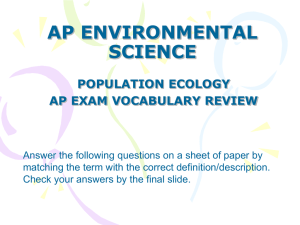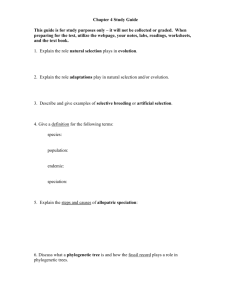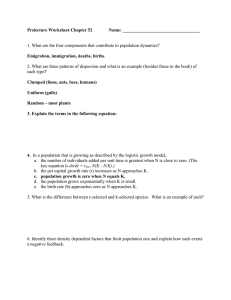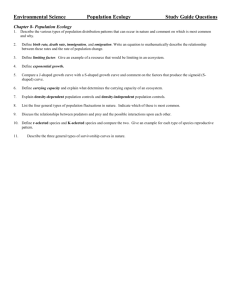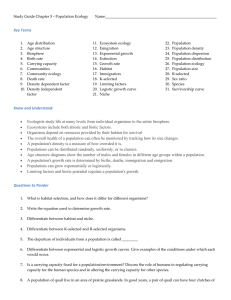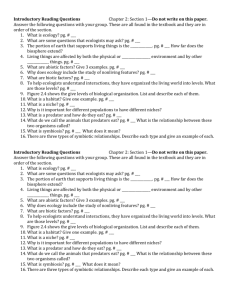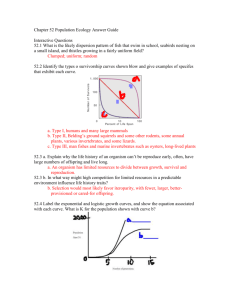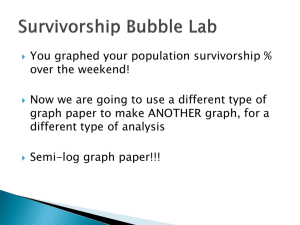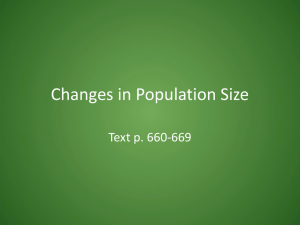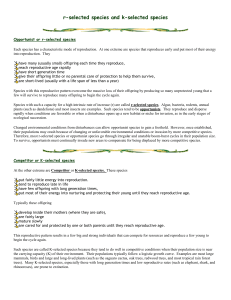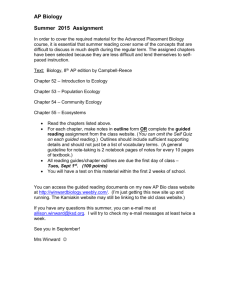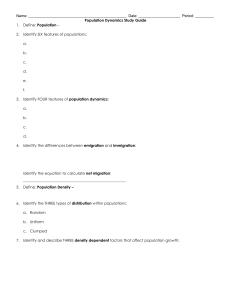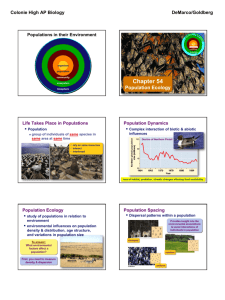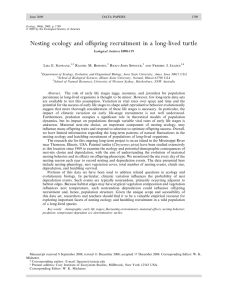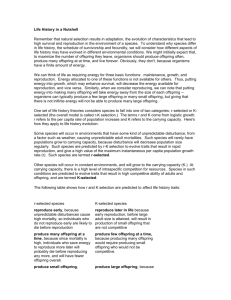Ecology Review I - Iowa State University
advertisement
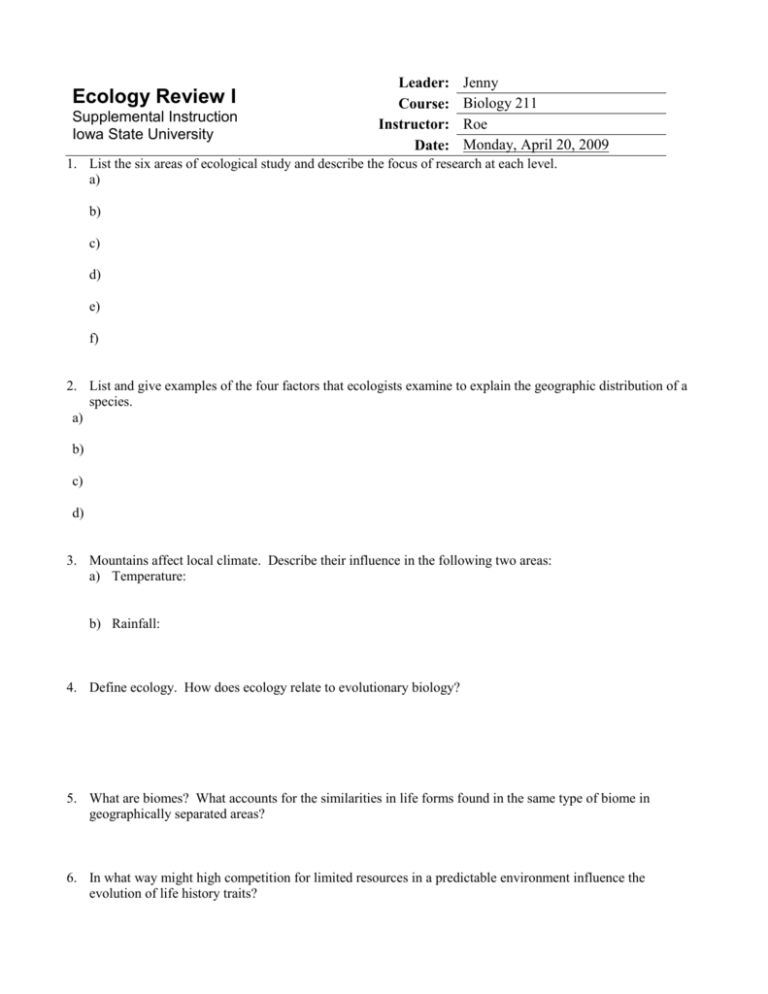
Ecology Review I Supplemental Instruction Iowa State University Leader: Course: Instructor: Date: Jenny Biology 211 Roe Monday, April 20, 2009 1. List the six areas of ecological study and describe the focus of research at each level. a) b) c) d) e) f) 2. List and give examples of the four factors that ecologists examine to explain the geographic distribution of a species. a) b) c) d) 3. Mountains affect local climate. Describe their influence in the following two areas: a) Temperature: b) Rainfall: 4. Define ecology. How does ecology relate to evolutionary biology? 5. What are biomes? What accounts for the similarities in life forms found in the same type of biome in geographically separated areas? 6. In what way might high competition for limited resources in a predictable environment influence the evolution of life history traits? 7. Explain why the history of an organism can’t be to reproduce early and often, to have large numbers of offspring at a time, and to live long. 8. Indicate whether the following would be considered to be r-selected or k-selected for life history traits. a) Early age at first reproduction; many small offspring produced b) Few, relatively large offspring produced every year 9. List some density dependent factors that may limit population growth. 10. List some abiotic factors that may cause population fluctuations. 11. Name the following two types of mimicry: a) Harmless species resembling a poisonous or distasteful species b) Mutual limitation by two or more distasteful species 12. Describe the competitive exclusion principle. 13. Differentiate between the three types of survivorship curves. I: II: III: 14. How are the logistic growth model and the exponential growth model different? 15. Be able to compare: density dependent vs density independent factors, r-selected vs k-selected, abiotic vs biotic factors. 16. Differentiate between the various dispersion patterns that may exist in a population. Which pattern is most common and why? 17. Please explain the equation: change in size/change in time = B + I – M - E 18. What is demography?
